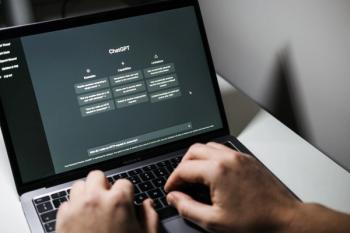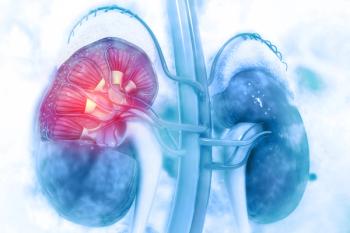
The Essential Facts of Life Are the Foundation of Health
On a humanitarian mission to Puerto Rico, Adam Sharp, MD, learned that to improve health, the essentials of food, housing, and water must be available and should be prioritized over medications, surgeries, and therapies.
Hurricanes, earthquakes, fires and other natural disasters can leave a trail of destruction, and they can illuminate underlying problems that previously existed. Puerto Rico offers an example of how Hurricane Maria has elucidated significant predicaments that existed before the hurricane with the island’s power utility infrastructure.
Puerto Rico has been a territory of the United States since the Treaty of Paris in 1899 and Puerto Ricans are citizens of the United States, yet months after Hurricane Maria, nearly half of the people of Puerto Rico are still without power. In the same way Puerto Rico can learn and grow from the issues brought to light after the recent hurricanes, the US health system needs to learn from the current “disaster” of high costs, political discord, and disparities in healthcare quality that currently exist. We suggest that in both cases, basic human needs, like food, water and shelter should be re-prioritized toward the top of the agenda.
Henry David Thoreau taught a core truth that can inform efforts to improve our health and well-being. Whether after a hurricane or as we look to reform our health system, fronting the essential facts of life (food, water, and shelter) should be the foundation to build upon.
During a recent humanitarian mission to Puerto Rico, my companions and I worked to repair roofs, and provide solar-powered lights and water filters. As an emergency physician, my education and training were of little benefit to the group (since, fortunately, nobody fell from a roof). However, it was abundantly clear that our goal to help rebuild roofs and provide light and water were for more important to the health of those we visited than any medicines or healthcare I could have offered. To improve health, the essentials of food, housing, and water must be available and should be prioritized over medications, surgeries, and therapies, because without the basic necessities the medical treatments will have little benefit.
The National Academy of Medicine, and other healthcare organizations1 are beginning to recognize that healthcare and basic social needs cannot be separated. Many are now emphasizing the importance of identifying and addressing the medical and nonmedical factors impacting health simultaneously as a standard part of care delivery. Historically, county health systems and other government, religious, and community organizations have been the ones focused on assisting individuals and communities with food, shelter, utilities, and other basic needs.
Though social workers and case managers have, in many instances, provided herculean efforts to help many people in the healthcare setting, these efforts have been low priorities for the overall organization, largely haphazard and poorly coordinated. Why is it we don’t know which of our diabetics are food insecure? Which of our “high-utilizing” patients have no power or utilities in their home? Are 30-day hospital readmissions more closely linked to a lack of transportation for follow-up than a patient’s clinical status?
Emergency departments (ED) are frequently the entry point to healthcare for the disadvantaged and the primary reason for many patient’s visits has much more to do with their social circumstances than their medical needs. It’s ironic when the public is shocked and surprised when hospitals don’t feed, clothe, and house patients without identifiable medical problems. The broadly disseminated, unfortunate circumstances of a woman in need of the “essential facts of life” in Maryland recently is a case example.2 She was released from a Baltimore hospital into the cold with only a hospital gown, and the event was captured by a passerby leading to public outcry. The response of readers and the public illustrates the expectation most people have that health systems address the nonmedical needs of those seeking healthcare.
Most agree that releasing a disadvantaged individual into the cold without adequate clothing is wrong, but where does the health system’s obligation to provide nonmedical services begin and end? Sadly, our health systems are not designed nor financed to address these nonmedical needs as part of routine care. EDs care for patients who have foot pain that is the result of having no shoes or people who suffer from heat stroke or frost bite because of a lack of housing. We have even cared for an individual who called 911 to get ambulance transportation to the ED for abdominal pain, which he attributed to hunger pains. These types of nonmedical problems can be a source of frustration and angst among medical providers. After all, medical and nursing training does not typically prepare one to clothe, house, and feed individuals. Similarly, hospitals and health plans are not well equipped to efficiently address these nonmedical problems either. Many wonder if these are even worth tackling in the already-complex US healthcare world.
The US health system is reaching a tipping point, which, hopefully, will help us to address hard questions and difficult problems that have been avoided, historically. When the shelters are full, should the ED keep a patient who is medically cleared in a bed because it is cold outside? Until we first understand the scope and prevalence of these problems, we cannot devise a solution. Public discourse about the roles and responsibilities of the healthcare sector in screening and addressing nonmedical needs is necessary. In the same way, Puerto Rico will struggle to unite and overcome the recent devastation from hurricanes without repairing the power grid and restoring adequate infrastructure for appropriate housing. We must move toward better coordinated, more efficient, and higher quality healthcare. If this plan is to be successful, then we must have a health system strategy to front the essential facts of life and define the responsibilities of our hospitals, government programs, and community organizations to begin tackling the nonmedical needs of individuals.
This type of culture change to hospitals, medical providers, and health systems will not happen overnight, in the same way that nearly half of Puerto Ricans still have no power 4 months after the hurricane. Changes will be incremental, but they should begin now. There are 3 areas that will need to be addressed: screening for nonmedical social needs; building local resource databases that can address nonmedical needs; and assisting patients to connect to local resources. It’s not rocket science, but helping providers and patients to feel comfortable discussing finances, housing and food as part of a typical medical visit will require some adjustments.
My colleagues and I loved our brief time in Puerto Rico putting roofs on homes, even though I was the least skilled craftsman on our team. We loved it, because we felt like we were making a difference. As healthcare providers, we want to feel the same satisfaction that our efforts will aid in helping people recover and live the fullest, healthiest life possible. That is certainly what we all want as patients.
Hopefully, in the not-too-distant future, patients will be asked if they have enough food at home or if they need help paying for the utilities when they visit the healthcare clinic. We expect that these small changes to identify and address the basics, may, as Thoreau found long ago, enable us to “live deep and suck out all the marrow of life.”
References
1. Magnan, S. Social determinants of health 101 for health care: five plus five. NAM Perspectives. 2017.
2. Woodrow Cox J, Vargas T, Moyer JW. He saw a dazed woman put out in the cold by a Baltimore hospital. He started filming. The Washington Post. January 12, 2018.
Newsletter
Stay ahead of policy, cost, and value—subscribe to AJMC for expert insights at the intersection of clinical care and health economics.















































